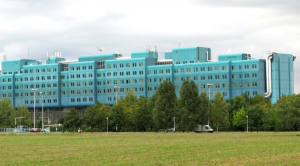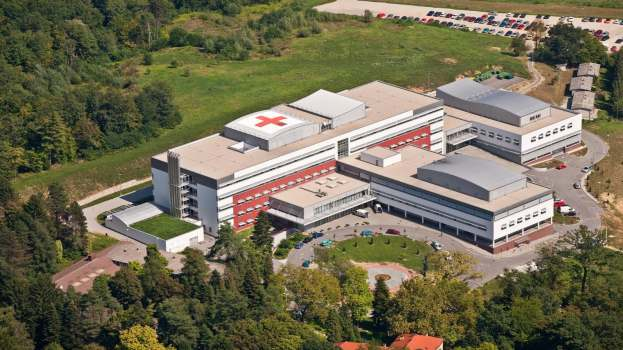The Croatian government is currently undertaking an extensive reform of the healthcare sector to increase its efficiency and limit spending to more affordable levels. Business Monitor International forecasts healthcare expenditures to grow by 1.9% in US dollar terms, reaching $4.74 billion by 2022. Private sector expenditure is expected to grow at a rate of 3.1% by 2021
Croatia is a country in Southeast Europe. It borders Slovenia to the northwest, Hungary to the northeast, Serbia to the east, Bosnia and Herzegovina, and Montenegro to the southeast, sharing a maritime border with Italy. Its capital, Zagreb, forms one of the country’s primary subdivisions, along with twenty counties. Croatia has an area of 56,594 square kilometers (21,851 square miles) and a population of 4.07 million, most of whom are Catholics.
Croatia is classified by the World Bank as a high-income economy and ranks very high on the Human Development Index. The economy is dominated by service, industrial sectors and agriculture. Tourism is a significant source of revenue, with Croatia ranked among the top 20 most popular tourist destinations in the world. The state controls a part of the economy, with substantial government expenditure. The European Union is Croatia’s most important trading partner. Croatia provides social security, universal health care system, and a tuition-free primary and secondary education, while supporting culture through numerous public institutions and corporate investments in media and publishing.
 Healthcare sector
Healthcare sector
Funding for healthcare in Croatia is done principally through the compulsory health insurance system, which is operated by the Croatian Health Insurance Fund (HZZO). The HZZO collects contributions from the working population and the government makes payments on behalf of those exempt, such as the elderly, the unemployed and dependents.
The $4.31 billion budget of the HZZO provides treatment for approximately 4.1 million insured persons annually. An aging population, with 20.1% of its people older than 65 years of age, presents challenges for the limited healthcare budget. EU funds are often used for modernization and upgrades of hospital equipment. An estimated $268.5 million in EU funds will be invested in healthcare over the 2014-2020 period.
Upcoming healthcare projects include upgrades of emergency medical services, the introduction of mobile clinics, and delivery of a national cancer prevention plan. Also, a national children’s hospital worth around $120 million will be built in the next several years.
In 2018, the Croatian market for medical equipment and supplies was estimated at $359.8 million, or $86.4 per capita, primarily government-funded. It is expected that the market will expand at a rate of 7.9% per annum, reaching $496.4 million by 2022. The largest product area within the market was consumables, accounting for 22.1% of the overall total market, followed by patient aids, dental products, and orthopedics. Consumables are also a fast-growing area with 21.7% of the overall total market.
Healthcare expenditure
 Croatia’s imports of medical devices grew by 72.3% to $491.1 million in 2017, following growth of 16.3% in 2016. Most of the imports come from Germany, Belgium, China, the Netherlands, Italy and Slovenia, while the US ranks 12th. Croatia has a small domestic production sector, supplying both the domestic market and other countries of the former Yugoslavia. Exports grew by 157.6% to $169.5 million in 2017, following growth of 76.3% in 2016. This growth is mainly due to the re-exporting of mechano-therapy apparatus.
Croatia’s imports of medical devices grew by 72.3% to $491.1 million in 2017, following growth of 16.3% in 2016. Most of the imports come from Germany, Belgium, China, the Netherlands, Italy and Slovenia, while the US ranks 12th. Croatia has a small domestic production sector, supplying both the domestic market and other countries of the former Yugoslavia. Exports grew by 157.6% to $169.5 million in 2017, following growth of 76.3% in 2016. This growth is mainly due to the re-exporting of mechano-therapy apparatus.
Pharmaceutical expenditures in Croatia accounted for 32.3% of healthcare expenditure or 2.35% of GDP in 2017. Total drug expenditures in Croatia in 2017 were around $1.3 billion, which represented a 9.1% increase after sharp decline in 2014 and 2015. Croatia’s pharmaceutical expenditure per capita is $311, the seventh highest per capita expenditure in the Central and Eastern Europe (CEE) Region. Prescription drugs accounted for 93% of all pharmaceutical sales.
The Croatian pharmaceutical market is highly competitive, with market share distributed among a large group of multinational and domestic companies. The domestic drug industry currently meets 35% of local demand in terms of value and 50% in terms of volume. The value of imported pharmaceuticals reached $1.34 billion in 2017, with marginal projected growth. Croatia exported $1.13 billion worth of pharmaceuticals in the same year.
Croatia spent an estimated 7% of GDP on healthcare in 2018, equal to $4.3 billion, or $1,031 per capita. This is high compared to the neighboring countries but remains considerably below Western European countries. 77% of this spending was in the public sector ($3.11 billion) and 23% in the private sector ($986 million).
Medical device market
Croatia has a small domestic production sector, and there is very little multinational manufacturing activity.
Around 95% of the medical device market is supplied by imports. Market leaders are European and US manufacturers, namely General Electric, Johnson & Johnson, 3M, Bauerfeind, Astra, Drager, etc. Some of these companies have established their own local subsidiaries, while most companies will use third party distributors to supply the market.
The Croatian government is currently undertaking an extensive reform of the healthcare sector to increase its efficiency and limit spending to more affordable levels. Nevertheless, Business Monitor International forecasts healthcare expenditures to grow by 1.9% in US dollar terms, reaching $4.74 billion by 2022. Private sector expenditure is expected to grow at a rate of 3.1% by 2021.
Croatia is a popular medial tourism destination for dental services, rehabilitation, orthopedics, dermatology and aesthetic surgery, with a high potential for further growth. Medical tourism already drives a demand for high-quality medical, dental, and pharmaceutical products, and the demand should grow exponentially over the next three years. Additionally, medical tourism creates a demand for hospitality services in the healthcare sector, healthcare software, telemedicine, and accreditation institutions. An overview of medical tourism in Croatia is available in the Croatia Country Commercial Guide.
Croatia is a member of the European Union, and it has fully implemented the new EU Medical Device Regulation.
 Current demand
Current demand
The National Healthcare Development Strategy 2012-2020, developed by the Croatian Ministry of Health, will expand health-related IT systems in the country and restructure the hospital sector.
Improving the quality of healthcare and the efficiency of public health services in Croatia has been a government priority for the past three years. In February 2017, the European Regional Development Fund allocated $77.3 million to upgrade infrastructure and the procurement of medical devices at 12 Croatian hospitals. In March 2018, the Ministry of Regional Development signed three EU Fund healthcare grant agreements totaling $28 million. In April 2018, the Ministry of Health announced its goal to implement new clinical trial guidelines that will hasten approval and contracting procedures to increase the volume and improve access to innovative therapies.
In 2018, Croatia had 90 hospitals and most of them are in the public sector. The size of the private healthcare sector is expanding in Croatia, but the greatest increases have occurred in the number of general practitioners’ offices, which do not require as much high-tech equipment as large hospitals. Private clinics and medical practitioners account for approximately 10% of the total services provided in the health sector.
The health and dental tourism sectors are growing in Croatia, presenting high potential to boost high-quality medical equipment and pharmaceutical sales.
The Croatian pharmaceuticals market is dominated by generic products, more so than most other markets in the CEE region, due to the relatively small number of patented products available for reimbursement. As Croatia’s laws and regulations align with the EU norms, the over-the-counter (OTC) medicine sector is being liberalized, which will contribute to a rebalancing of the domestic pharmaceutical market and the switching of categories from prescription-status to OTC.
Approximately 25% of all drug expenditures are attributed to various groups of cardiovascular drugs. The second highest ranked group is nervous system drugs, followed by immune system/cancer treatment drugs and gastro-intestinal drugs.
Croatian pharmaceuticals distributors are interested in the possibility of representing additional US principals and/or using the manufacturing capacities of US private label manufacturers. Food supplements and OTC pharmaceuticals represent other areas where Croatian distributors are looking for new brands.
















